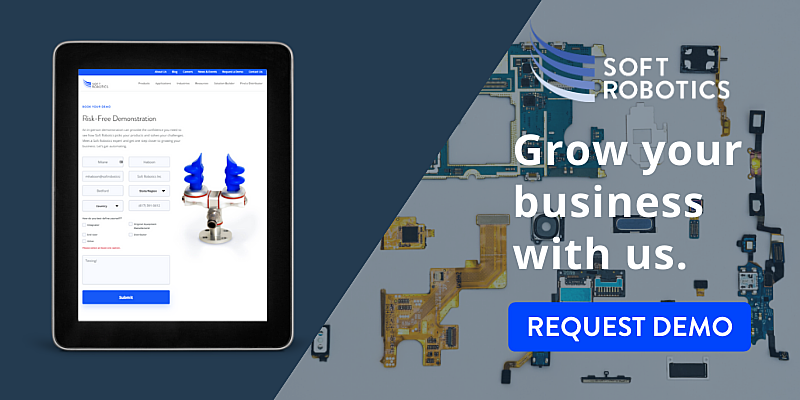
Robotic automation brings many benefits to manufacturers like increased productivity, product quality, and overall efficiency. The initial investment for robotics can be quite expensive and difficult to justify to your manager, board members or other executives in your company. To achieve the highest ROI for your robotic automation project, you first must choose the right end-of-arm tool (EOAT) for your application. Why? Your ROI is dependent upon which EOAT you choose because it has the biggest impact on your bottom line. Think of it this way, what good is a robot without the ability to pick things up and put it back down? The question you should be asking yourself is: “What’s the ROI for my EOAT?” To answer this, consider the following factors to provide an idea of how your EOAT could affect your business over the years to come.
1. Upfront Costs
With several EOAT options out in the market, it makes sense to examine and compare the upfront costs, or the initial price/investment of the EOAT. Depending on your chosen EOAT, your upfront costs may include custom design work. For example, with rigid and vacuum-based EOATs, extra components are required. You have to design and manufacture a bracket that connects these components together, then you will need a method to attach to your robot. A vacuum source or valve is needed (or both) to control the tool so a control system will also need to be designed, otherwise, your tool won’t work. Finding the right integrator to provide custom design work is not only an investment of time but also an investment of your money. Whichever type of EOAT you choose, the proper mounting mechanisms are required to complete your framework. These additional costs need to be considered when calculating your ROI.
2. Tool Changeover
Now let’s talk about your operating costs. Vacuum-based systems and rigid grippers can handle a wide range of products but what they can’t handle well is product variability. With a rigid gripper, the fingers and components that come in contact with the product will need to be custom-designed in order to pick the product and with the vacuum, you have to make sure your suction cups are placed in just the right spot for the part you are handling. If you’re handling just one product, a tool changeover is not required but what happens when you have more than one SKU to pick? Or when that one product varies slightly in shape, weight or size? This is an operating cost you must consider because tool changes mean not only are you paying for multiple tools, but you’re also faced with the cost of downtime when you change those tools over. With the right EOAT, you can avoid tool changeover and pick a variety of products using just one gripper.
3. Maintenance
Manufacturers all over the world are faced with strict regulations around traceability and safety on their production lines – even more so if you’re working with food. A few questions to consider: How often does your process require your tool to be cleaned? How easy/difficult is the tool to clean? Further, what about tool maintenance – how often does your tool or parts of your tool need to be replaced and how long does it take to do this? These are all important considerations when looking to understand your EOAT ROI.
We minimize downtime for cleaning with ingress protected grippers. Our solution also runs on a closed-loop pneumatic system which prevents debris from getting into internal places and clogging the tool. Choosing the wrong EOAT can mean the difference of time spent cleaning hard to reach interiors versus disassembling an easy to clean tool.
4. Energy
Last but not least, consider the energy costs. Most EOATs are driven off of either compressed air or mechanical pump. Compressed air is expensive and mechanical pumps have to run full time and can use a lot of energy. Compressed air can be turned on and off depending on your demand. For example, with a soft gripper, small amounts of compressed air is used for short periods of time when grasping the item. No additional air is in use as the gripper continues to hold it. When the gripper releases, a short burst of compressed air is released. With a vacuum-based system, compressed air is in use as long as the item is being held. Compared to a soft gripper, those short bursts use less air and energy than mechanical pumps. Mechanical pumps are constantly running even if nothing is being picked. Find out what your EOAT requires for energy and remember to factor this in when calculating your ROI.
These are the four considerations you must factor in when looking to understand your EOAT ROI. Upfront costs, tool changeover, maintenance costs, and energy usage must all be considered together when looking at ROI–not just one or two individuals.
We’d love to talk to you about our plug and play solutions that adapt to your products in real-time, our ingress protected gripper solutions and our closed-loop system. To see how we can save you money, increase productivity and get the most out of your EOAT, request a virtual demonstration and see us in action.

